The NVIDIA SHIELD Tablet Review
by Joshua Ho on July 29, 2014 9:00 AM EST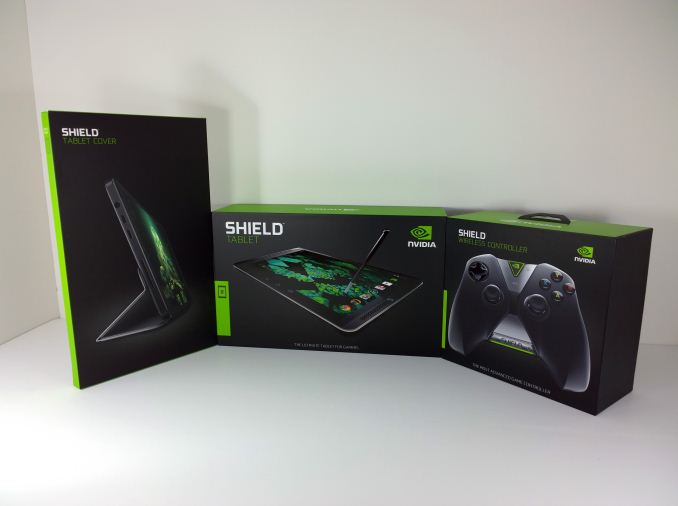
As I discussed in our launch article last week, the Shield tablet is very much the culmination of lessons learned from 2013. While the Tegra Note 7 was a decent tablet, it had to eke out a profit through hardware sales against competition that was willing to sell their tablets with no profit on hardware. Meanwhile the Shield portable was a good portable gaming device, but it was far too specialized to be anything but a gaming device. Without an established gaming ecosystem, NVIDIA struggled against established competitors.
As a result of these influences, today NVIDIA is becoming the first OEM to launch a serious gaming tablet running Android. While gaming tablets have been done before, they’ve been few and far between. Now it has always been technically possible to take a high end tablet and make it usable for gaming, but for the most part these attempts are marred by either the need for root or an application that requires extensive work on the part of the user to create proper control profiles for each game. In addition, the SoC in the tablet is often underequipped for intensive 3D gaming.
That’s where the Shield tablet comes in. With Tegra K1, a dedicated controller, 2x2 WiFi, and a huge amount of custom software, there’s definitely a lot of ground to cover. Once again, while the Shield tablet is a gaming device, it must also be a good tablet. To that end, NVIDIA has tried to differentiate this tablet with DirectStylus 2 and dual front facing speakers/bass reflex ports. I’ve included a table of specifications below to give a general idea of what the tablet is like.
| NVIDIA Shield Tablet | |
| SoC | Tegra K1 (2.2 GHz 4x Cortex A15r3, Kepler 1 SMX GPU) |
| RAM/NAND | 2 GB DDR3L-1866, 16/32GB NAND + microSD |
| Display | 8” 1920x1200 IPS LCD |
| Network | N/A or 2G / 3G / 4G LTE (NVIDIA Icera i500 UE Category 3/4 LTE) |
| Dimensions | 221 x 126 x 9.2mm, 390 grams |
| Camera | 5MP rear camera, 1.4 µm pixels, 1/4" CMOS size. 5MP FFC |
| Battery | 5197 mAh, 3.8V chemistry (19.75 Whr) |
| OS | Android 4.4.2 |
| Connectivity | 2x2 802.11a/b/g/n + BT 4.0, USB2.0, GPS/GLONASS, mini HDMI 1.4a |
| SIM Size | None or MicroSIM |
| Price | $299 or $399 (16GB/WiFi or 32GB/LTE) + $59 (optional controller) |
Hardware
Outside of the basic specs, the tablet itself has a much more subtle industrial and material design. While the large speaker grilles are maintained from the Tegra Note 7, the dimpled look and feel is gone. Instead, the finish is very much reminiscent of the Nexus 5. The feel isn’t quite rubbery the way soft touch finishes tend to be. Instead, it feels more like a high grain matte polycarbonate. Along the sides, there’s a noticeable chamfered edge where the back cover meets the display, although in practice this mostly affects aesthetics rather than in hand feel. The flip cover that is designed for the device is almost identical to the one in the Tegra Note 7, and folds up similarly. As with the Tegra Note 7, there are two angles that the flip cover can take. Overall, the aesthetic is much more subtle than the Tegra Note 7, and looks quite similar to the Nexus 7 (2013).
While it’s important for the tablet portion of the device to have decent material and industrial design, ergonomics and material design are critical for the controller. While the Shield portable had great ergonomics, it was heavy because the entire device had to fit in the controller. With Shield Tablet, that’s no longer the case. The result is that the controller is significantly lighter. While it still has some heft to it, I no longer feel the need to rest my hands against a table after significant playtime.
The controller itself is just as good as the one on the Shield Portable. The buttons, triggers, bumpers, and joysticks are all very close in feel. The one big difference are the tablet/Android controls. Instead of physical buttons, they’ve replaced the physical buttons with capacitive ones. The volume controls have also been moved down to the bottom of the controller and changed from a single button that triggers on-display volume controls to a rocker that allows direct manipulation of volume. Just above the volume rocker is a clickpad, which can be used to move a cursor through the UI. While this option exists, it’s a bit unpolished as the sensitivity isn’t tuned quite right to quickly navigate through the tablet.
Of course, there’s more to the controller than just the buttons and controls. NVIDIA has made sure to do things right by using WiFi Direct for communicating between the controller and the tablet. The frequency used depends upon what access point the tablet is connected to, so it can switch between 2.4 GHz and 5 GHz as necessary. NVIDIA claims that using WiFi Direct instead of Bluetooth drops latency by half, and also allows for microphone input and sound output via 3.5mm jack through the controller. In practice, the controller works great. I don’t have any complaints about this at all. Pairing is as simple as pressing and holding on the NVIDIA logo for a few seconds, then opening the pairing application. Up to four controllers can be paired to the tablet this way, which introduces interesting possibilities for local multiplayer games such as Trine 2. I also didn’t notice a difference in response time of the wireless controller when compared to the wired controller of Shield Portable. It’s incredibly important to get the controller right for gaming devices, and NVIDIA has nailed it. Overall, I’m happy with the basic hardware for both the controller and tablet. While it would be interesting to see a metal unibody design on the tablet, it’s difficult to justify at the price point that this device has to hit.
Of course, while hardware is important, software makes or breaks this tablet, so that’s next.


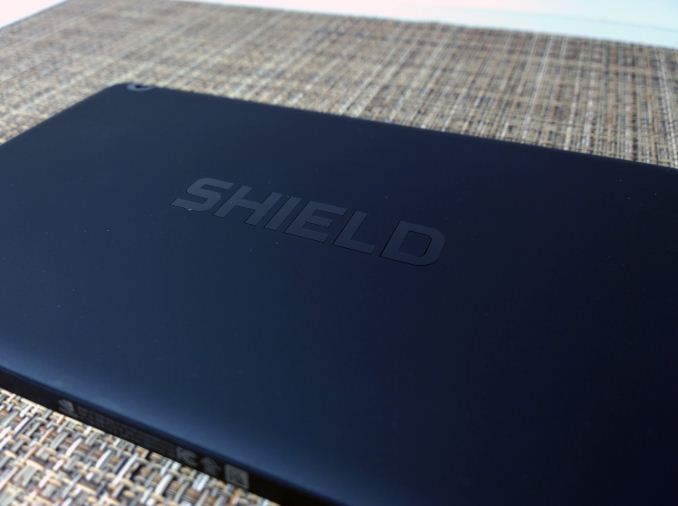
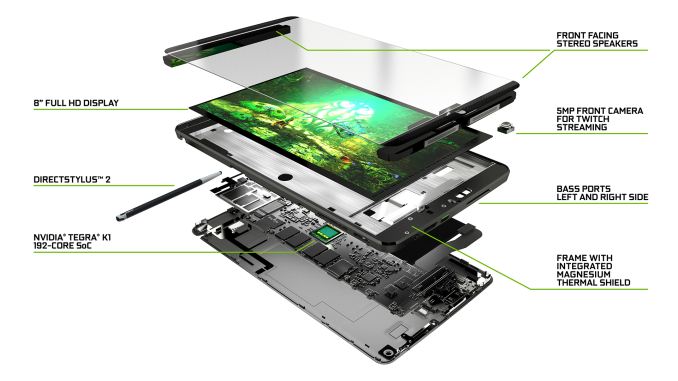
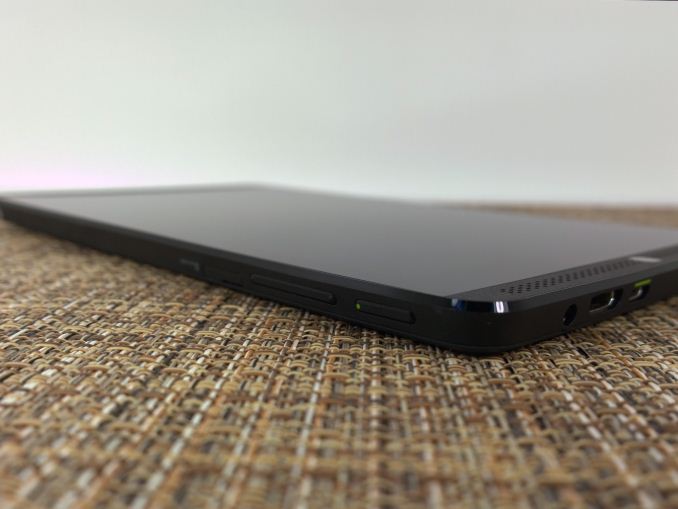
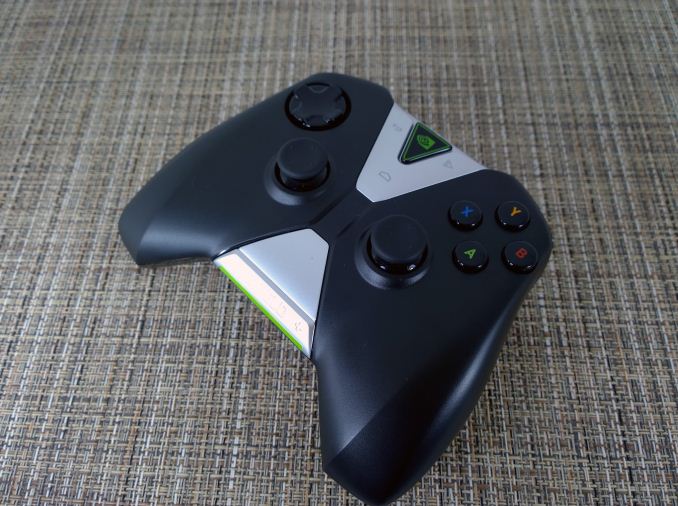








174 Comments
View All Comments
TheJian - Wednesday, July 30, 2014 - link
Refurb is not part of my vocabulary...LOL, especially of an out of date device with far less power. You're talking 3x the perf in 3dmark here. Even if nexus 7 2013 was retailing NEW for $140 this would be a gimme for me. You rarely get 3x the power for double the cash. Heck you rarely get 50% more power for double cash. We're talking 3x for 25% cash new here. That is ridiculously cheap power and it does things nexus 7 can't do. It's not just the power in this equation. Stylus, streaming PC, Grid, gamepad mapping software etc. You aren't going to draw with a stylus on nexus 7 etc. You won't be sticking in a 128GB SD card either. You're sacrificing so much at this point I'd say your options are only for the severely poor or people not interested in much gaming at all.akdj - Sunday, August 3, 2014 - link
And a ¼ the speed, almost two years behind, and if ever there was a gaming 'tablet'... Nex7 ain't it. Sorry. I've got em both. Someone mentioned it earlier ...Android and Play Store are a waste land for games. Consoles. Computers. Even iOS for short term to lengthy MMO/RPG style games. Nexus 7 is definitely NOT an equivalent, and for what it is, it's also a joke as a reader (portrait) or browser. I've got both models and held out Hope but today, it is the iPad if we're discussing low end 'consumption' tabs with definitely the ability to get some work done with it, especially with the massive third party iOS catering club for keyboard or case, stylus or whatever game you're into, hobby you're interested in or magazine, book or newspaper ya wanna read the App Store has itakdj - Sunday, August 3, 2014 - link
Sorry, I meant to add today's low end consumption and partial creation tablet is the iPad. I think Microsoft has an actuality niche with the SP3. So IMHO, it's iPad or Surface today. From the objective measurements Samsung seemingly has been working behind the scenes to correct the .nex mods and the 'S' series seem to do pretty well in some benches. Still. Play store is barren (I'm using both android and iOS-- FWIW, I love my Note 3akdj - Sunday, August 3, 2014 - link
Ugh. Edit Anand:-). Point was the SP3 is a full on computer with killer display and excellent Intel/iGPU power. So for creation on a tablet you've got another and signficantly more powerful core iX series proc or the K1. Obviously it's twice as much too. What about Gameboy/DS, Nintendo and their piss poor sales these days. I understand WHAT nVidia is doing but other than us geeks does anyone else?kidconcept - Tuesday, July 29, 2014 - link
Yes, I miss-typed. I meant $60 less.Knowname - Wednesday, July 30, 2014 - link
I would like to know if the stylus' features can only be used in that one application. I don't know if there is an app that all you stylus junkies use but I doubt it's the one Nvidia always shows.akdj - Sunday, August 3, 2014 - link
If it works, Sketchbook will drop weeks later. They're cross platform without a care in the world who's using S/B on which device. As long as their using it;)Voldenuit - Tuesday, July 29, 2014 - link
Thanks for the review.Anyone know if the controller is usable on PC (whether with hacked drivers or official support)? Might be nice to kill two birds with one stone (don't currently have a controller for my PC).
NZtechfreak - Monday, August 18, 2014 - link
Just got my Controller today, wasn't working in Dolphin (and the manual says PCs "are not supported at this time"). Hopefully that will come with firmware updates in the future.NZtechfreak - Monday, August 18, 2014 - link
Dolphin on PC that is, realised that could be confusing since I was talking about Dolphin for Android earlier.